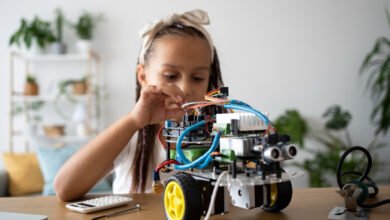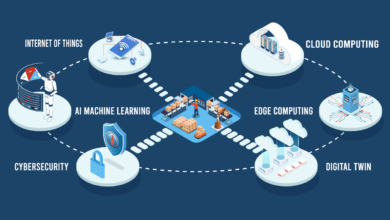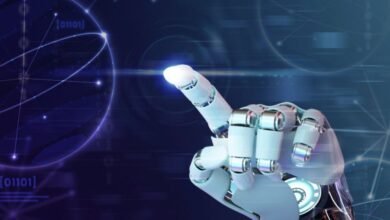What Is Machine Learning with Example? Unlocking the Magic Behind the Machines!

Alright, let’s talk machine learning! It’s one of those terms you hear thrown around in tech circles, but what does it mean? And how does it even work? If you’re picturing robots plotting world domination, you’re not entirely wrong—but there’s so much more to it. Whether you’re a tech novice or just someone curious about the digital magic behind your favorite apps, we’re diving deep into “What is machine learning with example?”—a journey that’s going to be fun, informal, and oh-so-enlightening!
What Is Machine Learning? Let’s Break It Down!
Machine learning (ML) is like teaching a computer to learn from experience, just like humans do. Instead of programming a computer with step-by-step instructions for every possible scenario, you provide it with data. It’s a bit like giving a teenager a bunch of car keys and telling them, “Figure out how to drive.” Sounds risky, right? But, just like most teens, the computer eventually learns through trial and error. The more data you feed it, the smarter it gets.
So, how does it work? At its core, machine learning is about using algorithms to find patterns in data. These algorithms then make decisions or predictions based on those patterns. Think of it as a very sophisticated form of pattern recognition.
Types of Machine Learning
There are several types of machine learning, but here are the big three:
- Supervised Learning: This is like giving the computer a cheat sheet. You provide it with labeled examples (like telling it, “This is a cat, this is a dog”), and the computer learns to distinguish between the two. Next time it sees a new image, it can tell you whether it’s a cat or a dog.
- Unsupervised Learning: Here, the computer is left to its own devices. You give it data, but no labels. It’s like giving a kid a box of LEGO bricks without any instructions. They might build something recognizable, or they might just create something entirely unexpected. The computer finds its patterns in the data.
- Reinforcement Learning: Picture this: a dog learning to sit by getting treats. Reinforcement learning is all about rewards and penalties. The computer learns through trial and error, adjusting its actions to maximize rewards.
What Is Machine Learning with Example? A Look at Real-Life Applications
Let’s get real. We hear about machine learning all the time, but where’s it being used? Here’s a peek into the real world:
Example 1: Netflix Recommendations
Ever noticed how Netflix seems to know just what you want to watch next? That’s machine learning in action! Netflix uses your viewing history to recommend shows and movies that match your tastes. It’s not just guessing; it’s analyzing patterns in your viewing habits and comparing them with others. So, if you and a bunch of other users loved “Stranger Things,” Netflix might suggest something similar.
But it’s not just about genres; Netflix’s algorithm digs deeper—considering the time of day, your past behavior, and even how long you watch a show before bailing. That’s why the recommendations can feel eerily accurate.
Example 2: Self-Driving Cars
We’re not quite in the era of flying cars yet, but self-driving cars? That’s a thing, thanks to machine learning. Companies like Tesla use machine learning algorithms to analyze data from sensors and cameras to make decisions on the road. The car learns to recognize stop signs, pedestrians, other vehicles, and even road conditions. It’s like having a super-attentive driver who never gets tired or distracted.
And how does the car learn? Through millions of miles of driving data, simulated environments, and constant updates. Every time the car encounters a new situation, it adds that experience to its database, becoming smarter and more efficient.
Why Is Machine Learning Important?
You might be wondering, “Why all the hype?” Well, machine learning is transforming the way we live, work, and interact with technology. Here’s why it’s such a big deal:
- Automation of Tasks: Machine learning is behind the automation of many tedious and repetitive tasks, freeing up human workers for more creative and complex challenges.
- Improved Accuracy: Whether it’s diagnosing diseases or predicting market trends, machine learning improves the accuracy of predictions by analyzing vast amounts of data.
- Personalization: From shopping to entertainment, machine learning personalizes your experience, making products and services more relevant to your needs.
How Does Machine Learning Work? The Technical Nitty-Gritty
Alright, let’s get a bit technical, but don’t worry—we’ll keep it simple! Machine learning typically follows these steps:
- Data Collection: The first step is gathering a lot of data. For example, if you’re building a machine-learning model to recognize cats, you’d collect thousands of images of cats.
- Data Preprocessing: Raw data is messy! This step involves cleaning and formatting the data to make it usable. For instance, you might remove blurry images or resize photos to a standard size.
- Training the Model: Here’s where the magic happens. You feed the data into a machine learning algorithm, which then learns from this data. The algorithm adjusts its parameters to minimize errors—kind of like a student learning from their mistakes.
- Testing the Model: After training, you need to test your model to see how well it performs on new data. This step ensures that the model isn’t just memorizing the training data but learning to generalize.
- Deployment: Once the model is trained and tested, it’s ready for the real world. You deploy it into an application where it starts making predictions or decisions.
FAQs About Machine Learning
Q: What is machine learning for example?
A: Machine learning is a branch of artificial intelligence where computers learn from data to make decisions or predictions. A common example is Netflix’s recommendation system, which suggests movies based on your viewing history.
Q: How is machine learning different from traditional programming?
A: Traditional programming involves giving the computer explicit instructions for every task. Machine learning, on the other hand, allows the computer to learn from data and make decisions on its own.
Q: Can machine learning be used in healthcare?
A: Absolutely! Machine learning is revolutionizing healthcare by aiding in early diagnosis, personalized treatment plans, and even predicting patient outcomes.
Q: Is machine learning the same as AI?
A: Machine learning is a subset of AI. While AI is the broader concept of machines smartly performing tasks, machine learning specifically refers to the ability of machines to learn from data.
Q: Do I need a lot of data for machine learning?
A: Yes, the more data you have, the better your machine learning model can learn and make accurate predictions.
Conclusion
So, “What is machine learning with example?”—it’s not just a buzzword; it’s a technology that’s reshaping our world in countless ways. From personalized Netflix recommendations to self-driving cars, machine learning is at the heart of modern innovation. By understanding its basics, you’re not just getting a glimpse into the future, but also opening the door to endless possibilities. Whether you’re a tech enthusiast or just someone curious about the digital world, machine learning is a field worth keeping an eye on!
And there you have it—a beginner-friendly guide that breaks down the mystique of machine learning with real-life examples! Dive deeper, experiment, and who knows? You might just find yourself creating the next big thing in tech!



